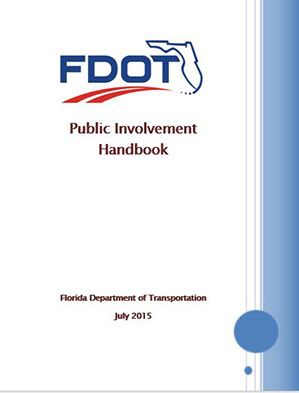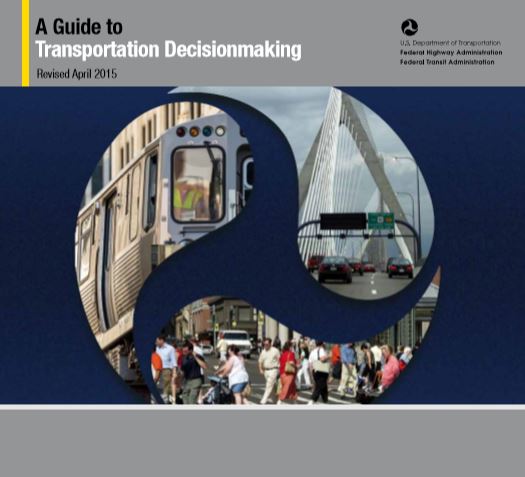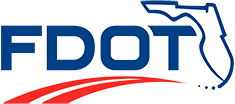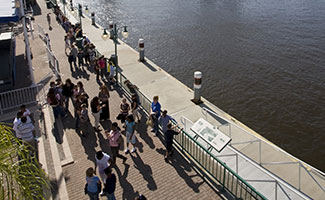Transportation Planning Studies
How Do We Involve the Public?
Public involvement during planning brings diverse viewpoints and values to the surface early in the decision-making process and consists of activities and actions that both inform and involve the public so they can help influence decisions that affect their lives. It allows for early coordination between all participants to ensure a project moves forward into the next phase smoothly and with support from all involved and affected parties.
Public engagement is the primary means by which we gather qualitative data, through conversations and meetings with affected and interested parties, such as local governments, local, regional, and state agencies, and private sector entities. The type of public involvement activities conducted during planning typically include broad-level outreach with an emphasis on defining goals, needs, objectives and priorities, while fielding recommendations to support a program or project.
The information on the following pages provides an overview of public involvement requirements, planning process best practices, as well asan overview of the various planning activities undertaken by FDOT and the level of public involvement conducted for each.
For Public Involvement resources for the public (project information, meeting notices, etc.) and research projects visit http://www.fdot.gov/environment/pubinvolvement
Click on the “+” signs below to expand each section.
This page helps support FDOT’s practice to involve and engage interested and affected parties, and to comply with federal and state laws that intersect with public involvement. FDOT’s public involvement procedure reads in part, “…it is the policy of the Florida Department of Transportation to promote public involvement opportunities and information exchange activities in all functional areas using various techniques adapted to the audience, local area conditions, and project requirements” (Topic No.: 000-525-05h).
To help planning practitioners, FDOT has developed the Public Involvement Handbook which provides techniques and methods to encourage meaningful public participation throughout the transportation decision-making process. The handbook is intended for use by Florida Department of Transportation (FDOT/Department) staff, FDOT consultants, and any others interested in designing effective public involvement plans (PIPs). It provides guidance for developing and implementing effective public involvement activities that meet and may, in some cases, exceed federal and state requirements. Chapter 2 and Appendix C specifically reviews the federal, state, and FDOT requirements.

The Public Involvement Handbook Chapter 2 provides requirements for federal and state legislation regarding public involvement. It also provides a summary of the Department’s policies, procedures, and manuals that identify requirements and guidelines for public involvement in each phase of the project development process.
Summary of Federal Requirements
The current public involvement requirements for state, local, and metropolitan plans and programs established by federal legislation are found in Title 23 of the Code of Federal Regulations (CFR), Parts 450.210 and 450.316. For specific details, consult the regulations directly, which can be found online at www.gpo.gov.
A summary of the federal requirements can be found in Appendix C of the Public Involvement Handbook.

The Federal Highway Administration (FHWA) and the Federal Transit Administration (FTA) developed the Guide to Transportation Decisionmaking (2015) which helps inform the public on how transportation decisions are made, how government officials are involved in transportation decisions, and how members of the public can get involved in the transportation decisionmaking process.
Summary of State Requirements
The State of Florida’s requirements for public involvement are found in the Florida Statutes (FS), which are available online at www.flsenate.gov/Laws/Statutes. There are several chapters that address public involvement for transportation plans and programs, which are summarized in Appendix C. The following are the most frequently referenced statutes and requirements.
- Executive Order 07-01, Section 2 - Plain Language Initiative
- Section 120.525, FS, Administrative Procedures Act
- Section 286.011, FS, Public Business (Government in the Sunshine)
- Section 286.29, FS, Public Business (Green Lodging)
- Section 335.199, FS, State Highway System (Access Modification)
- Section 339.155, FS, Transportation Finance and Planning
- Jessica Lunsford Act
A summary of the state legal requirements, policies, and guidance can be found in Appendix C of the Public Involvement Handbook
Summary of FDOT Procedures
FDOT promotes public involvement through all phases of transportation project development. Several manuals and handbooks are available that provide guidance on developing public involvement programs and activities that comply with both state and federal legislation.
- The FDOT PD&E Manual establishes the Department’s procedures for complying with state and federal laws for public involvement. Guidance for the PD&E phase and beyond is provided in Part 1, Chapter 11, Public Involvement.
- The FDOT Districts are responsible for conducting public involvement activities for plans (such as the District Work Program) and projects following the procedures and processes established in the PD&E Manual. Individual projects may have unique circumstances that require special approaches to public involvement, and Districts are encouraged to establish Public Involvement Plans (PIPs) that meet these needs. However, all PIPs and procedures must comply with the Department’s minimum requirements and reflect the Department’s principles of being consistent, predictable, and repeatable.
- • In addition to District plans and projects, each district planning office has staff that serves as liaisons with their local MPOs. The MPO Program Management Handbook provides guidance to MPOs on their role; how MPO areas are designated, formed, and modified; and on federal and state transportation planning requirements. These requirements are specifically for the plans and programs that MPOs are responsible for administering, namely the Unified Planning Work Program, the Long Range Transportation Plan (LRTP), and the Transportation Improvement Program (TIP). Details about the public involvement requirements for each of these plans and programs are provided in the Handbook, which can be found online at www.fdot.gov/planning/Policy/metrosupport/Resources/FDOT%20MPO%20Handbook.pdf.
An engagement plan for a high-level, or long-term, planning study generally looks very different from a public involvement plan for a specific project. A planning or corridor type of study often involves a wide range of planning, policy, and research-related activities that may have a variety of results, ranging from short-term traffic operations solutions to longer-term and more complex visions. These studies are intended in large part to gather data, both qualitative and quantitative, about the areas along the corridor.
Stakeholder engagement is the primary means by which we gather qualitative data, through conversations and meetings with affected and interested parties, such as local governments, local, regional, and state agencies, as well as private sector entities. These studies may occur well in advance of funding decisions, may provide strategic direction for investment decisions in the future, or may result in recommendations for more immediate solutions. Engaging interested and affected stakeholders during planning studies brings an understanding of diverse needs and viewpoints to the process early on, in order to help guide future funding and implementation decisions.
FDOT staff are currently working to develop guidance and reference materials for public involvement for specific types of plans and studies. Please check back soon for updates. For current requirements please refer to the Public Involvement Handbook.
A planning or corridor type of study often involves a wide range of planning, policy, and research-related activities that may have a variety of results, ranging from short-term traffic operations solutions to longer term and more complex visions. These studies are intended in large part to gather data, both qualitative and quantitative, about the areas along the corridor. These studies may occur well in advance of funding decisions, may provide strategic direction for investment decisions in the future, or may result in recommendations for more immediate solutions.
The following studies and plans provide examples for how specific types of planning can be done:
Systems Plans:
-
Blueprint 2040 for Transportation (Long Range Transportation Plan)
- Highlights a variety of involvement methods, including involving the youth demographic
Corridor Plans:
- Tampa Bay Next Citizens Transportation Academy
-
Central Broward East-West Transit Study
- Highlights use of public involvement teams to distribute workshop notices in neighborhoods with a large percentage of rental units as well as at transit stops
-
I-75 Master Plan Study
- Highlights Intergovernmental coordination due to the multi-jurisdictional nature of the project
Note: If you know of a planning study that should be included as a notable example please email planning@dot.state.fl.us

